Rocket fighter "Bi"
The project of an interceptor fighter equipped with a liquid jet engine (LRE) was developed in an initiative order by the designers D.Ya. Berezniki and L.M. Isaev from the second half of 1940. The overall orientation of the work of the KB-293 contributed to the theme of this high-speed aircraft. headed by VF Bolkhovitinov, and whose employees were Bereznyak and Isaev. In particular, the “C” aircraft with twin engines and coaxial propellers, designed to achieve high maximum speeds, was developed and built here. Improving the "C" in the Bolkhovitipov design bureau to further increase the speed, we installed a direct-flow jet engine (ramjet engine) of Merkulov design in the tail end of this machine. However, testing of such engines in combination with reciprocating internal combustion engines (on I-15bis and I-153) showed a small increase in maximum speed, therefore, this direction did not receive development. At the same time, the idea of creating an interceptor fighter with a mixed power plant, including the rocket engine and the 1 ramjet engine, appeared. At the beginning of 1941, estimations were carried out only under the D-1-A liquid jet engine with a maximum load of 1400 kg (subsequently, the thrust was 1100 kg} designed by LS Dushkin.
The initiator of the interceptor project was A.Ya. Bereznyak, designer of KB-293, the development was carried out jointly with AMIsayev.
Work on the creation of liquid-propellant rocket engines for installation on aircraft (rocket gliders) was launched in the USSR at the beginning of the 1930s. The pioneers of the new direction were the bottom of the organization - the Jet Propulsion Study Group (GIRD) and the Gas Dynamic Laboratory (GDL) at the Research Institute of the Revolutionary Military Council of the USSR. In 1933, the aforementioned organizations merged into the Jet Research Institute (RNII), in which exploration work continued on the creation of a rocket plane
The first practical flight using LRE was carried out on the RP-318-1 28 rocket-gliding plane. February 1940. The RP-318 was a SK-9 sports glider designed by S.P. Korolev and equipped with an RDA-1-150 engine. Engine, developing traction 150 kg. developed by L.S. Dushkin and A.V. Pallo based on the ORM-65 design by V.P.Glushko. A feature of the power plant used at RP-318 was the supply of fuel components (kerosene and nitric acid) using compressed air.
After successful flights RP-318, the main designers of the aircraft were informed about the possibility of using LRE in the development of new projects. 12 July 1940 was determined by the decision of the USSR Defense Committee to determine the direction of the use of rocket engines for the creation of an interceptor fighter.
The task of developing such an aircraft was given to a group of RNII engineers led by MK Tikhonravov. After studying the various variants of the schemes, the design of the “302” interceptor, based on the use of LRE in combination with a ramjet engine, began. The launch of 302 was to be carried out using the LRE, then, at cruising speed mode, the ramjet engine was activated, allowing the attack to be carried out on several targets. In the future, they refused to use direct-flow engines, the 302 interceptor was designed and built for the RD-2M two-chamber rocket engine ( According to its layout and layout, the aircraft “302” resembled the described “BI” of increased dimensions).
The supply of 1365-1735 kg fuel ensured the operation of the RD-2М on take-off mode within 5 minutes. It was considered that this time was quite enough for a successful interception and attack of the enemy bomber. The main task in developing the RD-2М was to create a turbo-pump unit for supplying the fuel component into the combustion chamber of the engine.
The 302 interceptor and its powerplant were built before 1943. The airplane was built and successfully flown in the airframe version, but could not bring the engine to the required parameters, therefore, in the end, the work was stopped, but 302 was stopped.
As already mentioned above, the prospects for the use of LRE for aircraft on the eve of the war were guided by the D-1-A-1100 engine with a 1100 kg kg designed by LS Dushkin. In V.Volhovitinov KB with this engine they got acquainted with the spring of 1941. From this moment, the main stage of the design of the missile interceptor begins here. As in the case of "302", the designers relied on the supply of fuel through pumps - this option allowed to significantly increase the amount of onboard fuel and the duration of the engine. Like all developers, they are faced with the overwhelming task of creating such pumps operating in aggressive environments of nitric acid.
With the beginning of the war, at the end of June 1941, work on the project of a rocket fighter intensified. One of the main factors that accelerated the process of creating an aircraft was the decision to abandon the pumping of fuel components to the engine. We returned to the principle of acid and kerosene displaced by compressed air, tested on RP-ZSH. Due to the large volume and weight of the air cylinders, the selected option limited the amount of onboard fuel, while the engine was running reduced to 2-s minutes. Thus, the practical use of the interceptor has narrowed to near-hydrodrome flights. From here and one more of its names - "a fighter of defense of a point".
The draft interceptor project was ready and submitted to the People's Commissariat of Aviation Industry in the first days of July 1941. According to the scheme, it was a normal low-profile wooden structure, a chassis retractable with a tail crutch, the cabin was closed with a streamlined lantern, the armament was two large-caliber Berezina machine guns and two ShKAS. According to calculations, the take-off weight of the car was 1500 kg. start length - 350 m, maximum speed at the ground - 900 km / h, rate of climb - 180 m / s.
A special place in the accompanying documentation was occupied by the schemes of attacking targets at various heights and the time required for the destruction of the enemy. In all cases, this time did not exceed the duration of the engine operation - 2 minutes. On the one hand, this duration of active flight was seen to be negligible, however, in the conditions of an unfolding fiercest war, this factor was the most impressive indicator for higher instances.
Introducing the project, the designers committed to produce the first prototype in just three months. The Kremlin had its own thoughts on this. In early August, 1941 issued a decree of the Defense Committee, according to which it was necessary to build a missile interceptor in just 35 days!
To solve the unusual problem, OKB-293 was transferred to the barracks situation, the work was carried out almost around the clock. Working drawings were prepared in parallel with the manufacture of parts. Individual elements, thanks to the small size of the aircraft, were drawn in nature on plywood and went to work. All this allowed us to demonstrate really record time - the aircraft was manufactured in 40 days. Already at this stage, the designation "BI" is used - "near fighter".
More often, this combination of two letters is reasonably understood as "Bereznyak-Isaev." However, in all official documents of that time it was stated - “The BI plane designed by Major General IAS — Comrade. Bolkhovitinov V.S. "
During the construction of the machine-gun armament "BI" was replaced by two guns ShVAK caliber 20 mm, In the series was supposed to use guns caliber 23 mm. Summer tests were conducted either with the use of dimensional and weight models of this weapon, or completely without it.
In mid-September, 1941 g, immediately after the completion of the production of the first “BI” sample, according to the instructions of the Deputy People's Commissar of the Aviation Industry, A.S. Yakovlev, full-scale aircraft purges in the TsAGI pipe, showing quite satisfactory stability and controllability characteristics at low speeds. At the same time, the purge has shown that the elongated nose of the aircraft with increasing flight speed will create problems with the provision of road stability - this can interfere with aimed shooting from onboard weapons. Therefore, to increase road stability, the area of vertical tail has increased - small round washers were installed at the ends of the stabilizer, and the steering wheel was increased along the rear edge.
Since the rocket engine for installation on the aircraft was not yet ready, the first flight tests were conducted in a glider version. For a hook to the towing cable, on the left side of the fuselage, in its lower part, a special lock was installed. In the second half of September, the BI plane was transported to the LII airfield in Ramenskoye, where it would begin flying in tow for the Pe-2 aircraft. Flew Boris Kudrin. He performed 15 non-motorized flight, fixing the behavior of the machine in the air and on landing.
In October, all the work on the engine and aircraft was interrupted due to the exacerbated situation at the front and the exit of the German troops to the nearest approaches to Moscow. KB-293 Bolkhovitinova along with the entire economy was evacuated to the Urals, in the village of Bilimbay, located a km from Sverdlovsk, 50. The location was the old foundry since the Industrial of the Demidovs. By this time, the factory was no longer working and was practically in an abandoned state, so the settlers at first at a new place had to deal with the arrangement of industrial premises.
In the winter of 1941-42. The airplanes, headed by designers Bereznyak and Isaev, laid down three new airframes, completely corresponding to the first instance, now called BI-1. The use of templates and plazas, harvested back in Moscow, facilitated the continuation of work, in terms of the manufacture of wooden structural elements, no particular difficulties were foreseen. The retractable landing gear, which is the only complex aircraft mechanism, was ordered on the side.
Problems with the power plant on the contrary, there was plenty. The main task was considered to change the engine thrust from 400 kg to the maximum value 1100 kg. At the same time, it was necessary to provide the necessary tightness of the nitric acid supply systems, constant fuel pressure and multiple launches.
A test station was equipped to debug and refine the engine on the bank of the Zavodskoy pond, and fire tests were conducted under the guidance of the engineer L.N. Pallo. At the beginning of 1942, work on debugging the power plant was moving towards the final stage, so the question arose of preparing the pilot, who was to perform the first flight on a rocket plane.
For tests of the Bi-1, the leadership of the Air Force Research Institute appointed captain Bahchivandzhi, who was recalled from the front and in August 1941, Mr. Grigory Yakovlevich Bahchivandzhi was one of the youngest test test pilots, but he was not a newcomer at the Air Force Institute. He flew with 1935. G. Bakhchivandzhi filed a report with a request to send him on the front and was assigned to the 402-IAP. consisting mainly of test pilots (commander P.M. Stefanovsky |. Participated in combat operations until August 10 1941 flew a MiG-3 fighter, in a short time grew to a squadron commander. Its combat characteristics indicated:
During his stay at the front 65 produced deductions and 45 flew 05 hours in minutes. Spent 26 air battles. He is fluent in fighter aircraft, flies confidently and competently, has a great practice of high-altitude flights (2900 flights, 1285 hours). A strong-willed, demanding commander. Surely leads airplanes to the clouds and difficult meteorological conditions. As a pilot, he is balanced, calm, strictly observes: the discipline of flight, flies willingly. "
During the winter 1941-42 vols. G. Bakhchivandzhi got acquainted with the main features of "BI" and was preparing to start flying in the future. He was not known to have a backup. 44-year-old Boris Kudrin, who was already flying on the non-powered version, got sick and moved on crutches at that time.
20 February 1942 Bakhchnvandzhi flew to Bilimbay from the Air Force Scientific Research Institute (based on the other side of Sverdlovsk, at the Koltsovo airfield) on a connected Storkha and landed on the ice of the pond, close to the test station building. We had to train and launch a rocket engine on the stand.
The first three launches of the LRE produced Pallo, the pilot stood nearby and listened to his explanations. After passing through all the required procedures, Bakhchnvandzhi took a place in the booth booth, started the engine and brought it to the operating mode. A few seconds later, an explosion ensued, as a result of which the engine body broke off from the mount, hit the pilot's armored seat and flew far ahead. An additional nuisance was the breakthrough of fuel pipelines, from which nitric acid gushed.
Despite serious burns received by the participants in the tests, the outcome of the accident can be considered quite satisfactory, because all survived. In the proton case, further events would have developed in a completely unpredictable way.
A special commission investigating the accident found that the explosion occurred due to the fatigue failure of the engine chamber, which by this time had already completed its useful life.
Two months after the accident, the second LRE prepared for installation on the plane. 30 April 1942 Bakhchnvandzhi first launched the engine while in the cockpit of the BI-1.
To conduct flight tests in accordance with the accepted rules, a State Commission was established under the chairmanship of the BCPyshnova. The commission included the Head of the Air Force Scientific Research Institute, Pyotr I. Fedorov, the test leader from the Air Force Scientific Research Institute, M. I. Tarakanovsky. Chief Designer V.F. Bolkhovitinov and Leader for LRE, D.V. Pallo. It was a step by step, with testing all the systems, with jogging and approaching, to prepare for the first launch of the aircraft.
The first runs with a short-term engine start took place at the Koltsovo airfield 2 May 1942 g. Then, over the course of several days, the indenting and finishing inherent in all tests followed. The next few days passed in anticipation of the weather - it was snowing.
The first start took place on May 15, in the evening. Fuel replenishment during this flight was incomplete, the LRE worked for just over a minute, so everything happened extraordinarily quickly. Bakhchnvandzhi successfully started, gained height in a straight line, turned off the 180 ° after turning off the engine and switched to planning in the direction of the runway. The landing took place at an elevated vertical speed, so the aircraft’s landing gear broke down and the car lay on the fuselage (it should be noted that Bakhchnnandzhi did not fly the BI in a non-powered version, and in general, he didn’t have experience in flying gliders). This trouble, however, could not spoil the overall impression of the success achieved. The first flight of a fundamentally new combat aircraft took place!
In conclusion, on the first flight on a BI plane, Bakhchivandzhi wrote:
Climbing is done at higher speeds and with a large angle of recruitment. The reversals are performed without lowering or lifting the nose, the handle must be pulled but as the steepness of the bend turns, there is no flinching.
Planning and gliding aircraft performs steadily ... Landing should be done at speed, because landing at insufficient speed leads the plane to a rapid collapse, which cannot be prevented even by a pen. Landing was made with insufficient speed, as a result of the aircraft landing gear failure.
Flight - in comparison with conventional types of aircraft is exceptionally pleasant, because in front of the pilot there is no propeller, engine, noise and exhaust gases that enter the cockpit. The pilot sits in the front, with an exceptionally good overview of the front hemisphere and a significantly better rear view than on an ordinary plane.
The location of the devices is good, the cabin is not cluttered, the location of the control units is convenient.
Theoretical calculations of this aircraft are fully confirmed by flight. The aircraft has good stability and maneuverability at speeds up to 360 km / h.
For ease of operation, it is higher than modern fighters. ”
According to the assessment of the State Commission, the first flight of the BI-1 proved the possibility of creating a missile interceptor and the possibility of its use for military purposes. It was proposed to continue testing prototypes and, at the same time, proceed to the serial production of the aircraft.
For the production of a series in KB-213, considerable work was done to restore the drawing facilities (in the manufacture of the experimental machine, much was done on the originals of the drawings and they became unusable). At the same time, the design was being finalized and changes were made to it. In addition to gun armament, under the fuselage, "BI" equipped a streamlined container for ten bombs weighing 2,5 kg. The bombs were supposed to be “poured” over the line of attacked bomber, the bombing was carried out by means of a distance pipe, the target was hit by a blast wave and shrapnel.
The serial version received the designation "BI-BS", its development was engaged in plant number XXUMX, where the chief designer was S.A. Moskalev. 499-1942 produced 43 copies of “BI-BS”, however, they were not brought to the flight stage.
For the manufacture of a series of engines D-XNUMHA-1 used a base in Nizhny Tagil, there sent a leading AV Pallo. Launching powerplants for prototypes further commissioned Isaev. From that moment, AM Isaev completely retrained in the engine. Subsequently, he became one of the leading Soviet specialists in the field of LRE.
Anticipating the success of the BI tests, Chief Designer VF Bolkhovitinov carried out significant organizational work, which in modern conditions may well be defined as an advertising campaign. The process of making and testing the aircraft was filmed on film and mounted the film “Flying into the Future”. The film was shown to employees of the aviation industry, while not only to the leaders. The latter led to the close attention of the staff of special bodies, who almost blamed Bolkhovitinov for divulging military secrets.
Then the equipment of training bases in Moscow and Sverdlovsk began for the training of pilots to fly on BI planes. Already in 1943, it was supposed to create several compounds of such rocket fighters.
Further tests continued like this.
The first prototype of the BI-1 was recognized to be significantly damaged from acid exposure, so no further flights were made on it. In the winter of I9J2-43, Plant No.293 built and prepared for the flights the BI-2 and BI-3 vehicles. equipped with a ski retractable chassis.
Starting from 10 in January, 1943 performed four flights on BI-2 - Bahchivandzhi flew three times and once - January 12 - test pilot KA Gruzdev. The longest engine running time was 84 s, maximum speed 675 km / h, vertical speed 82 m / s, flight altitude 4000 m. Duration of stay and air 6 min 22 seconds. It is worth adding that in flight from the pilot Gruzdev ripped off the left ski, but he safely made an emergency landing.
In March, the Bakhchnvandzhi flights began on the BI-3. After the first departure of this instance in the next flight, it was decided to bring the flight speed to 750-800 km / h
The launch took place 27 March 1943 g, On the 78 second flight, after the engine had finished, the plane overcame a horizontal trajectory section, then, without slowing down, went into a dive and crashed into the ground. Test pilot Bakhchivandzhi died.
The cause of the crash could be determined by testing the model of the BI in the high-speed wind tunnel T-106 TsAGI. Studies have shown that BI-3 crashed due to delay in a dive - a phenomenon that occurs when air flow past a straight wing at transonic speeds.
After the death of Bakhchivandzhi, the work on the BI planes continued. The total number of experienced (built) machines brought up to seven copies.
To determine the increase in combat capabilities, one of the samples, the BI-6, was equipped with direct-flow, air-reactive engines. Straight side mounted on the ends of the wings, in this form, the BI-6 was tested in the TsAGI pipe in May 1944.
In January, 1945, two flights on a BI-7 plane equipped with a ski landing gear, was performed by test pilot Kudrin. On the BI-7 was a more powerful engine RD-1 AM Isaev. With a take-off weight of 1800 kg, the maximum speed was 587 km / h, the vertical speed 87 m / s. As a disadvantage, the pilot noted tail shaking in some modes.
To determine the causes of tail shaking in March-April 1945, the BI-5 and BI-6 aircraft made a number of flights in the non-powered version, towed by the B-25 bomber.
In the period from 10 to 25 in March B.N. Kudrin flew to BI-5. On BI-6 in the period from 25 but April 29 - M.K. Baikalov. According to the reports of both pilots, nothing abnormal in these flights, including tail shaking, was found.
Tests conducted by Kudrin and Baikal spring 1945 were the last in stories aircraft "BI". In the future, flights were not resumed.
Brief technical description (compiled according to the documentation of BI-5 aircraft - BI-7)
The fuselage is wooden, with a cocoon structure, glued from veneer, consists of a set of stringers and frames covered with plywood.
The wing of the caisson type, uncut, sheathed with plywood. The wing has a trapezoidal shape in plan with a relative narrowing of 2,5 and a constant span of relative thickness 12%. TsAGI B-1-10 wing profile.
Ailerons duralumin With linen trim. The landing plates are duralumin, mounted on ramrods, deflected to 50 ° using a hydro-pneumatic system.
The free-carrying plumage (BI-1 had a small strut from the keel to the stabilizer) the rudders covered with canvas.
Single rack chassis, retracts through the air system. Wheels 400x500 mm. Skis size 1440x300 mm, equipped with spring shock absorbers placed in the boar ski. When cleaning pressed against the bottom surface of the fuselage.
Non-retractable crutch, oriented, with a small wheel 90x42mm, installed in a removable fairing.
Flight Line Length (m) ..................... 6, 940
Wingspan (m] ............................ 6,615
Flight line altitude (m} ....., .............. 2,500
Wing area (sq. M.) ......................... 7.04
Flight weight in motorless version (kg) ....... 805
Flight (starting) weight BI-7 (kg) ............ 1800
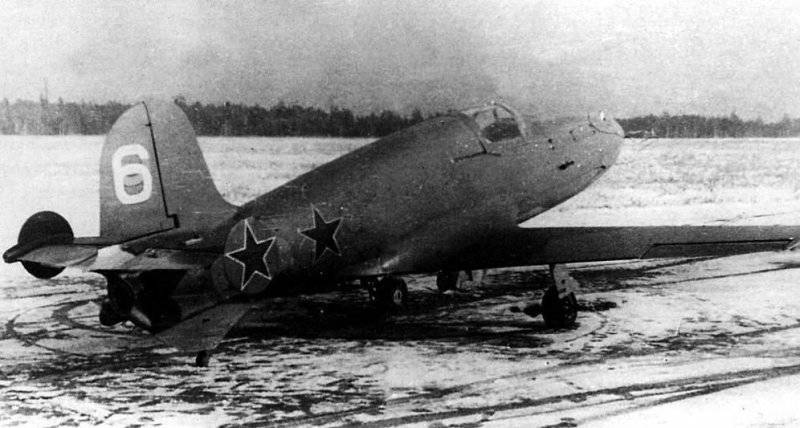
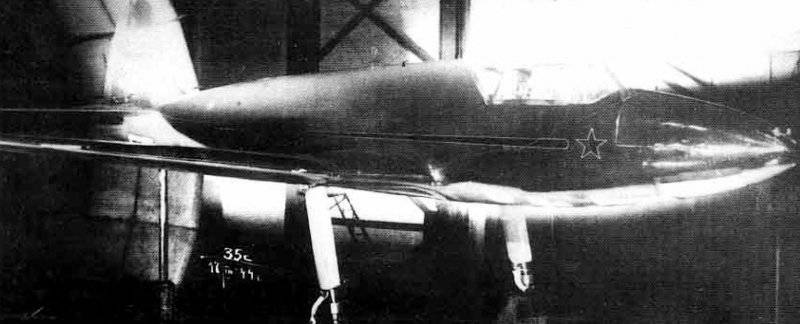
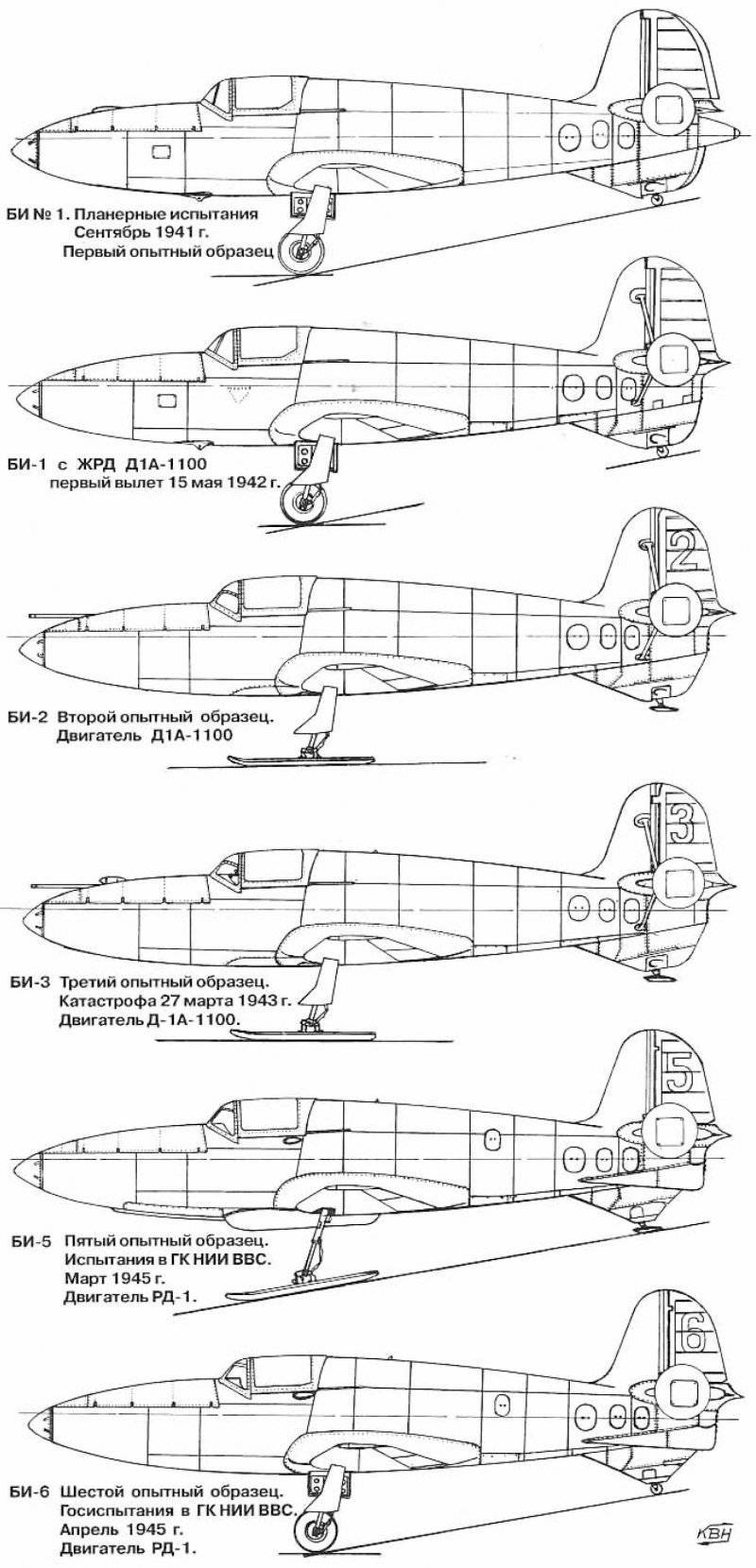
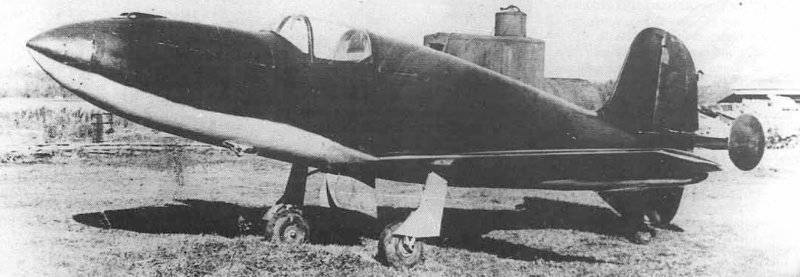
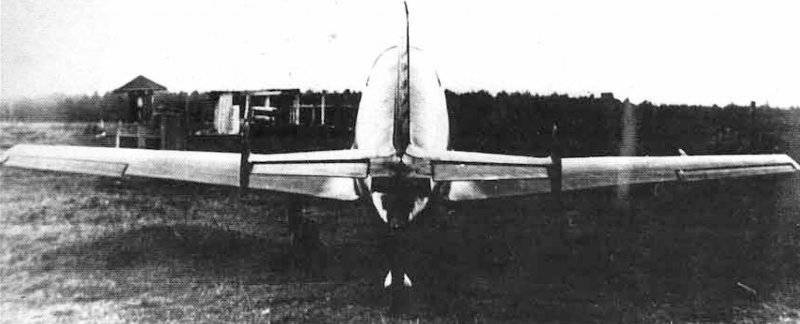
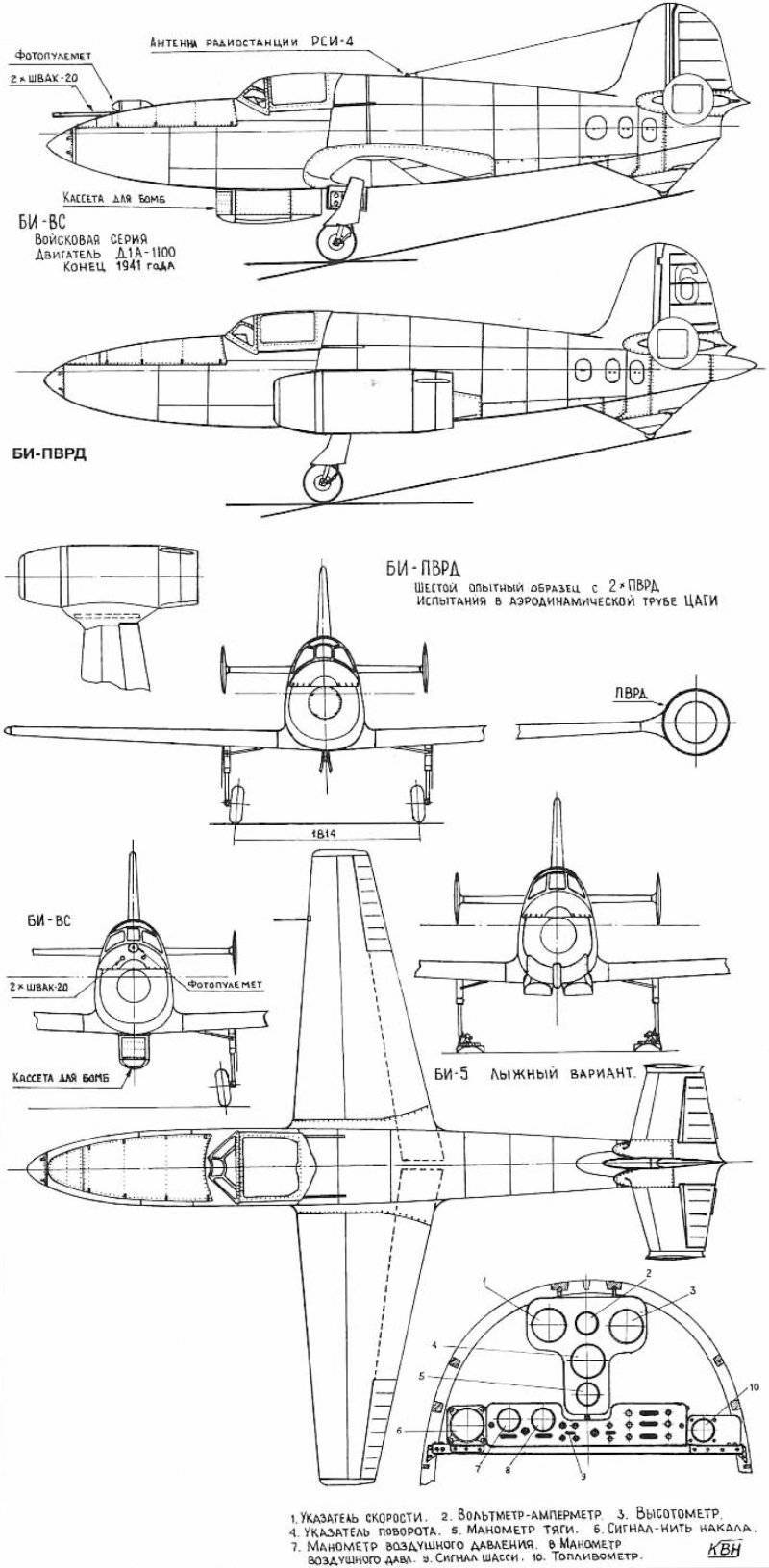
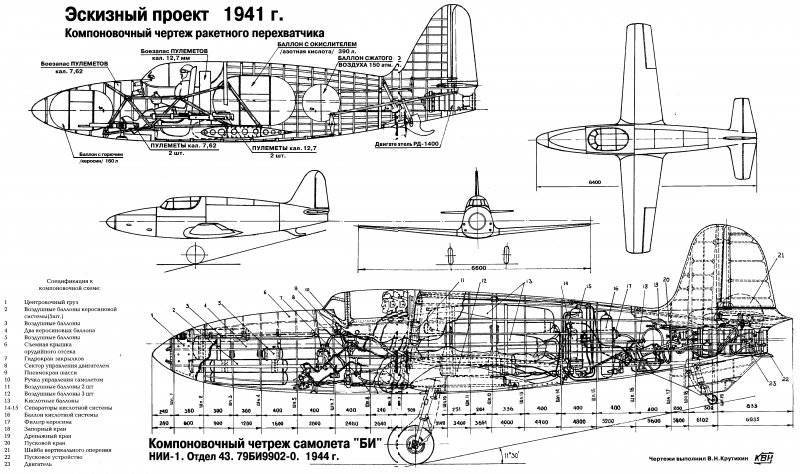
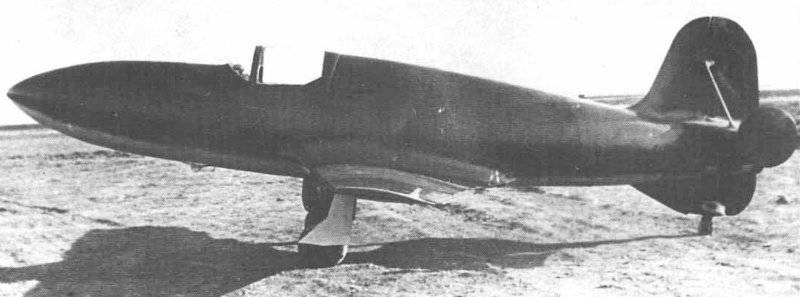
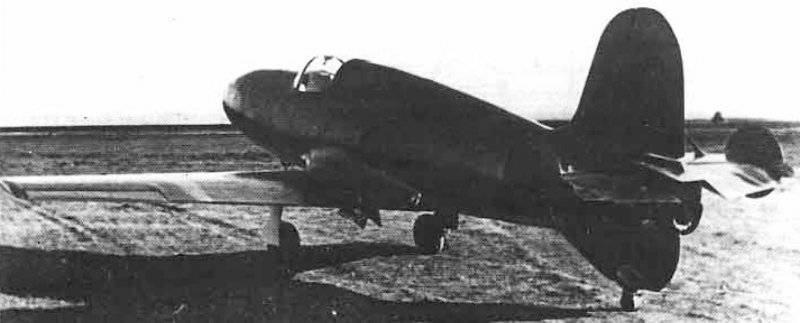
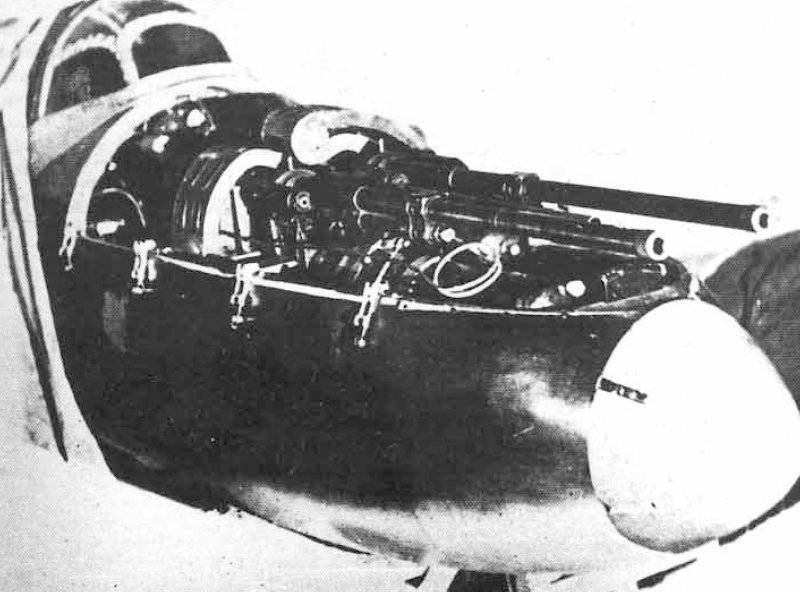
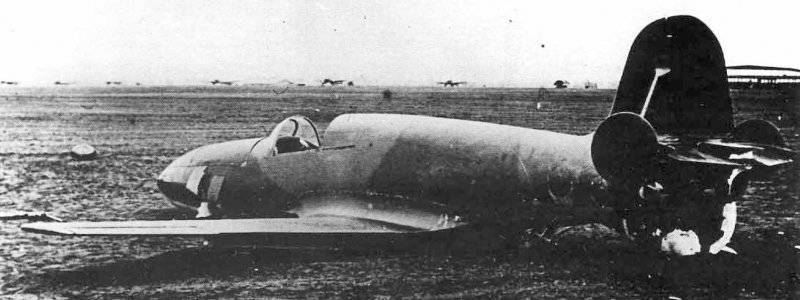
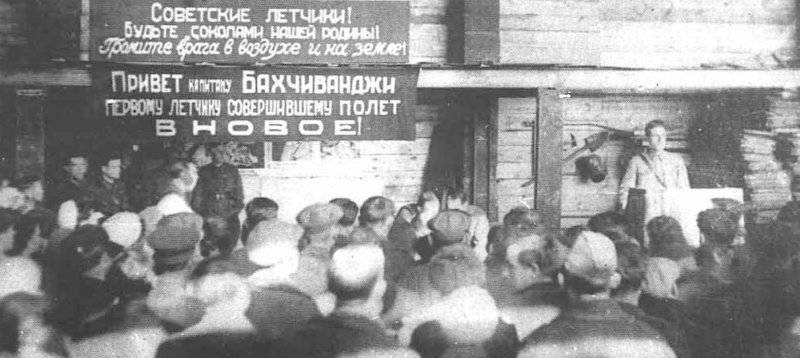
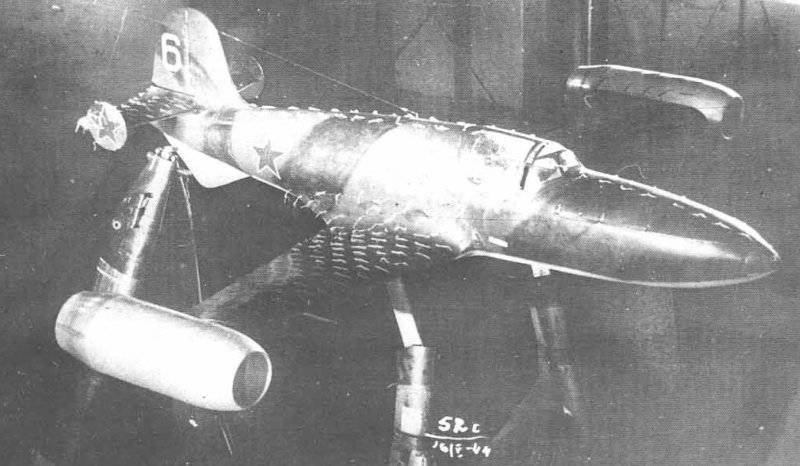
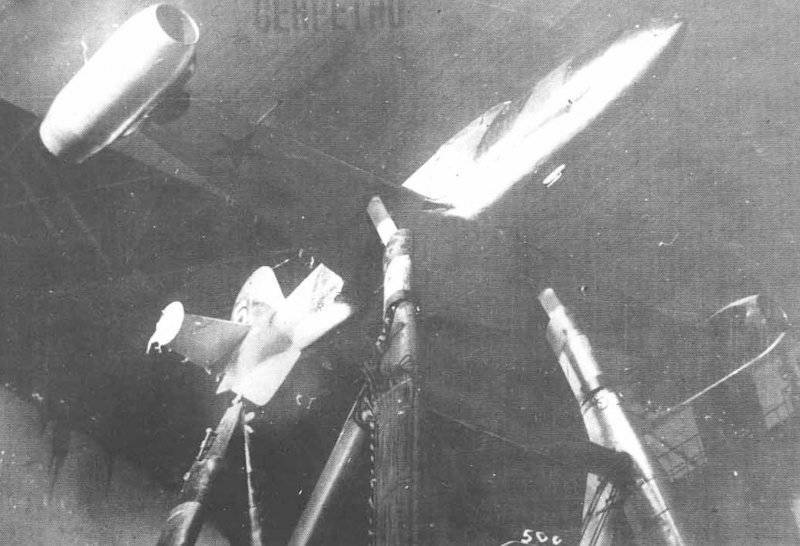
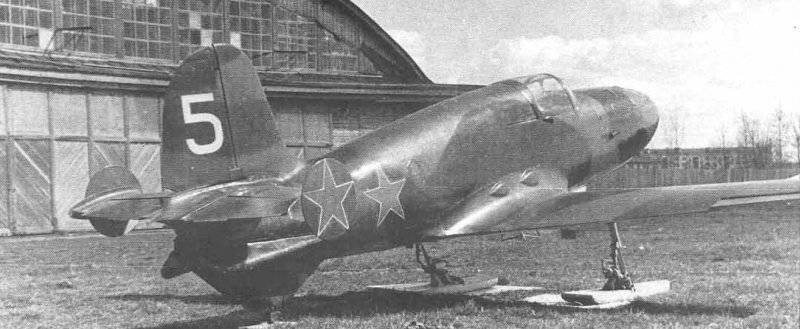

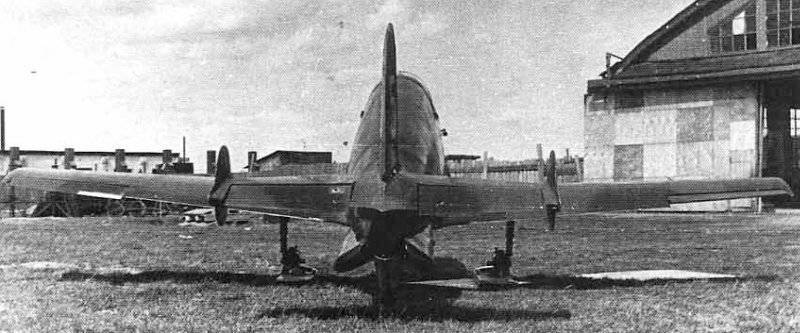
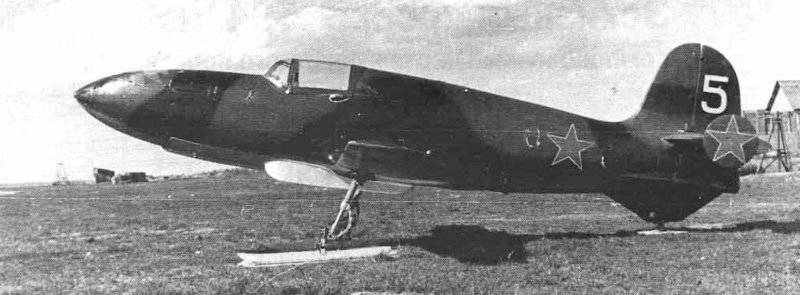
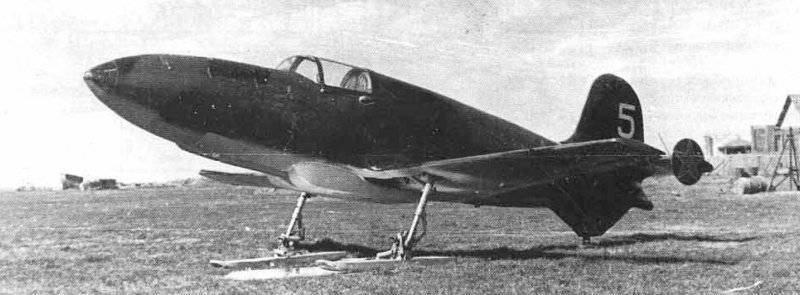
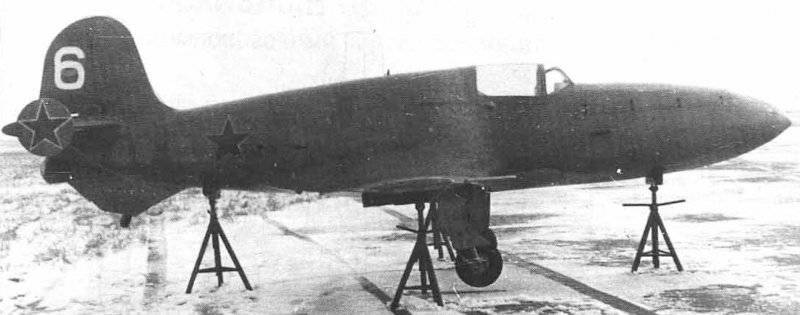
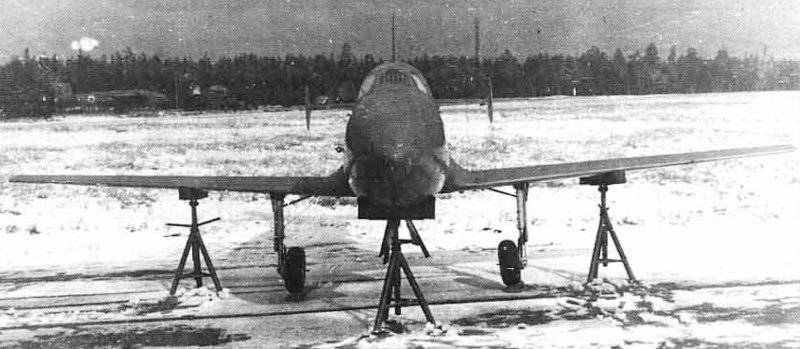
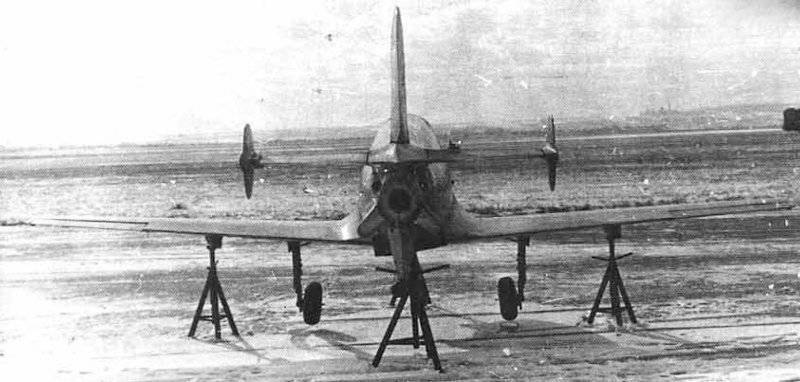
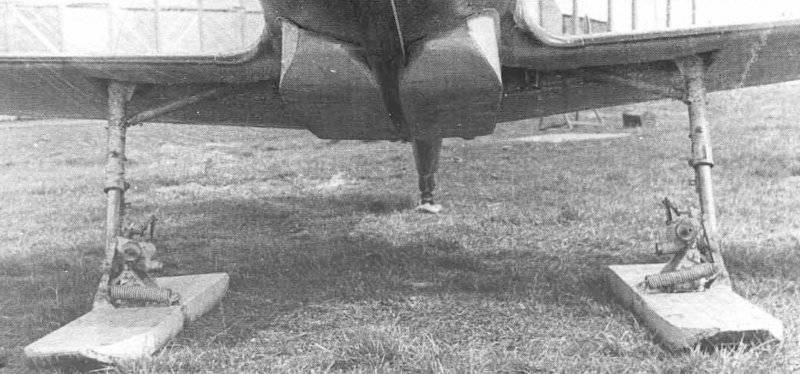
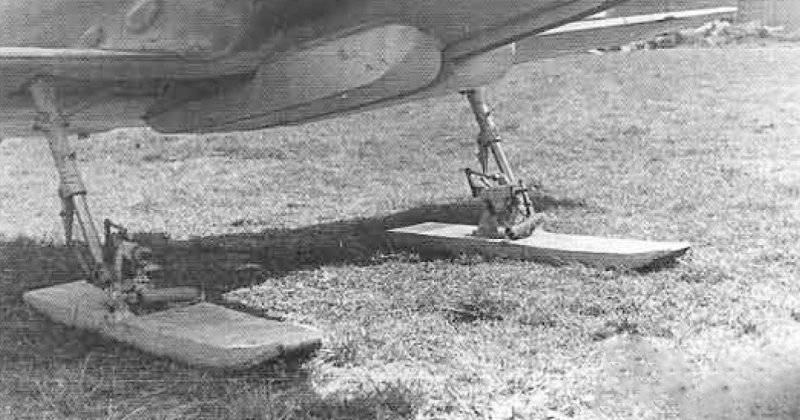
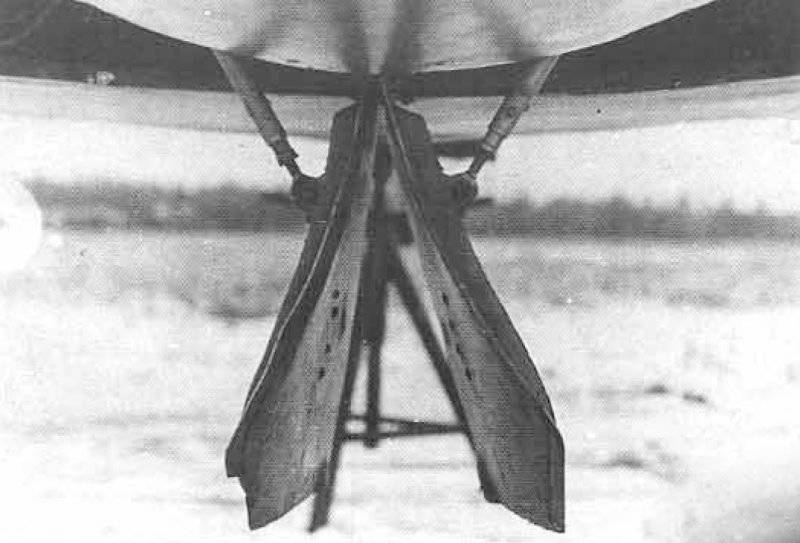
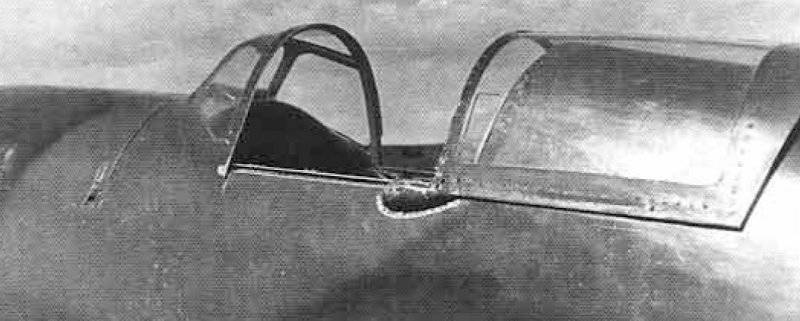
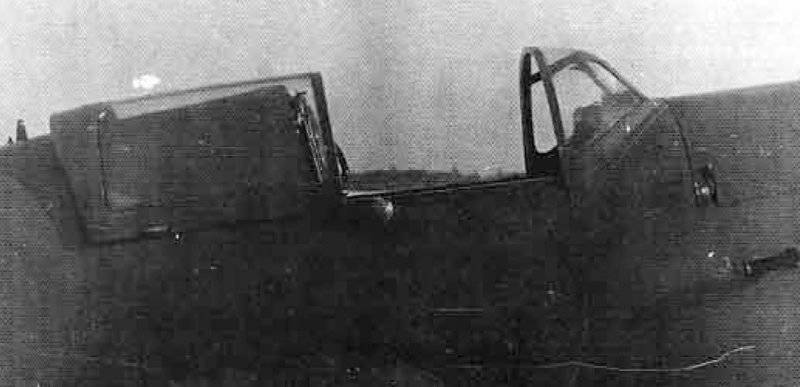
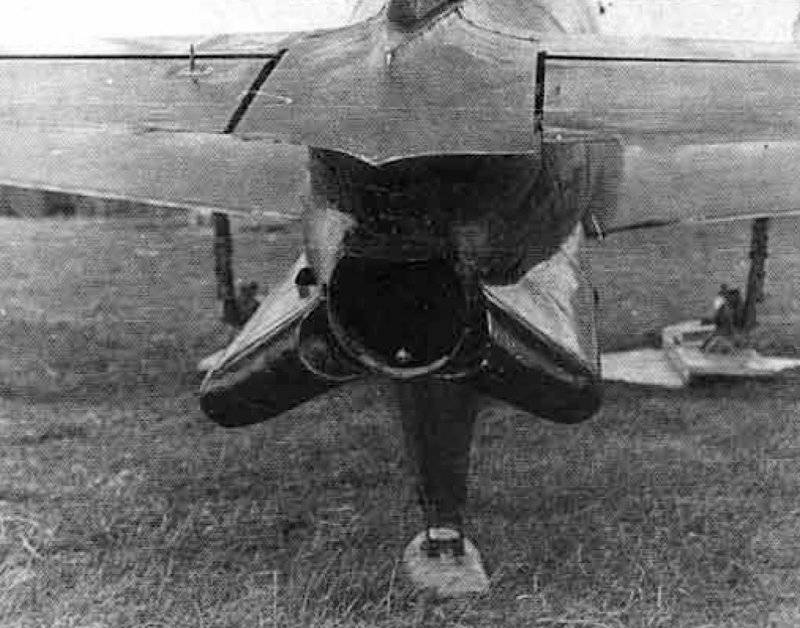
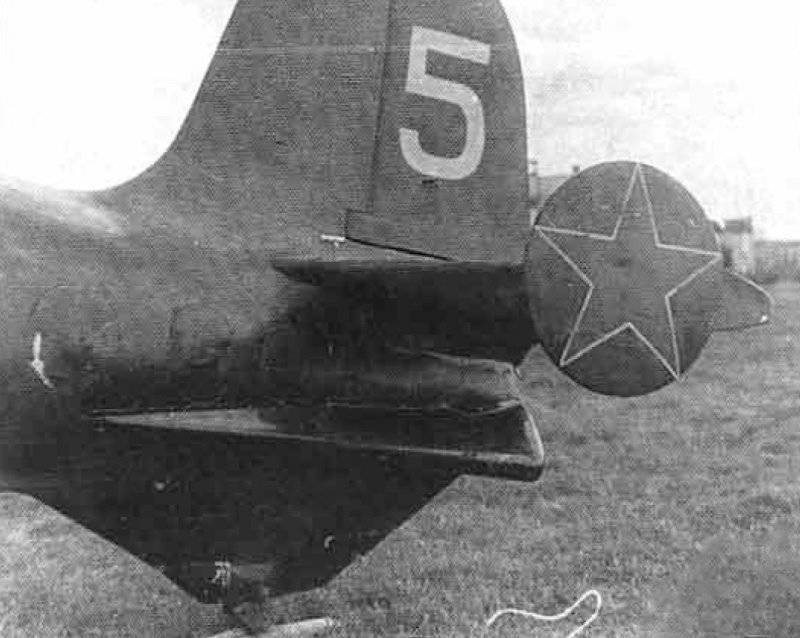
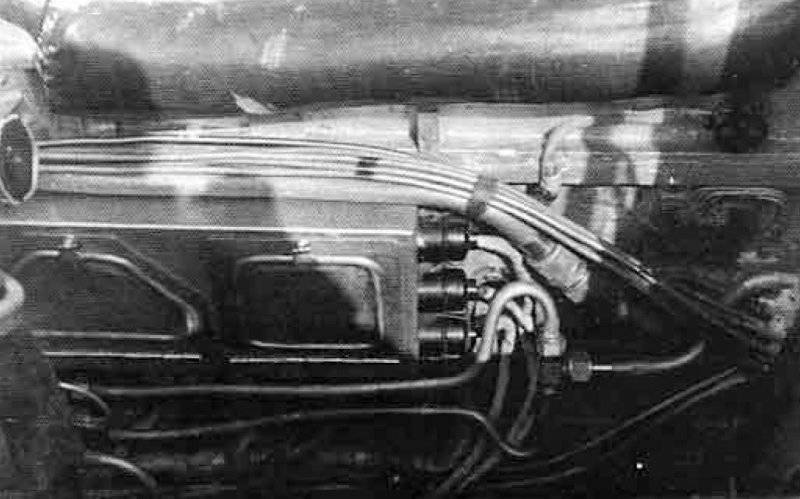
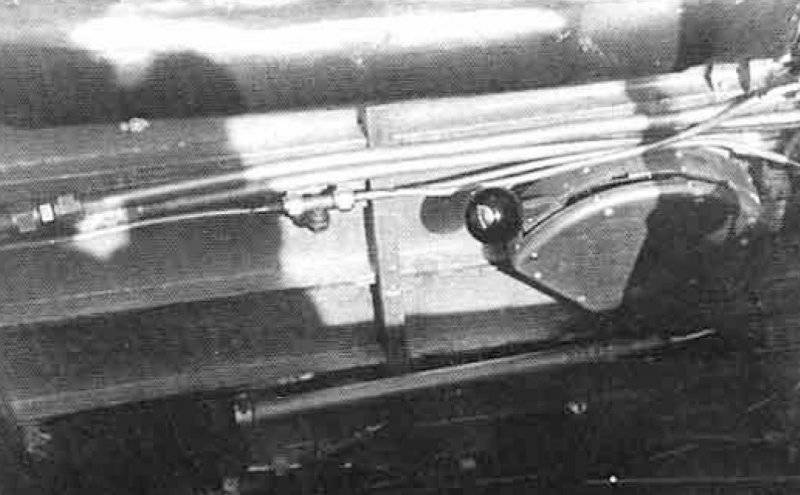
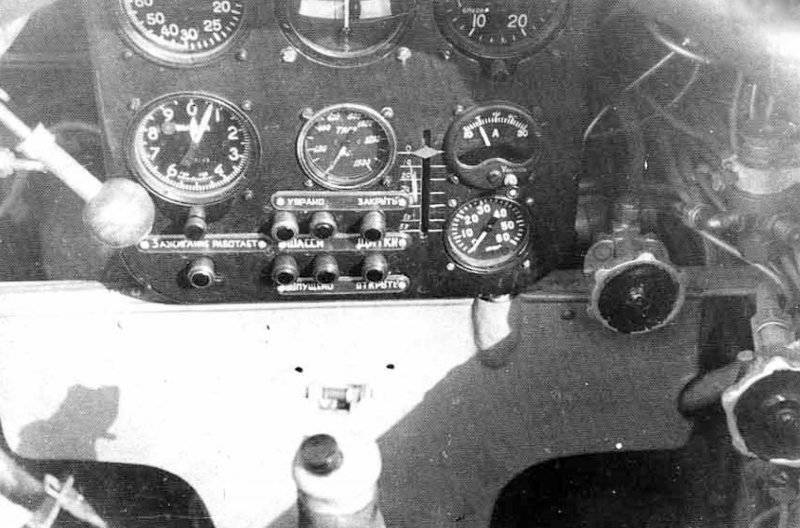
Information